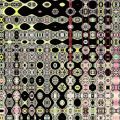
ant01
ant02
bauhaus4a
bubbly13
bug28a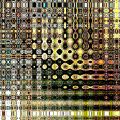
bug28ditha
bulb49ba
bulb49b
clipper15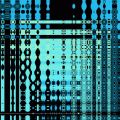
crop09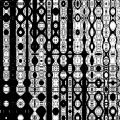
crop12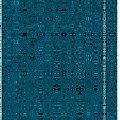
crop16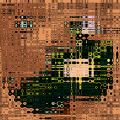
crown09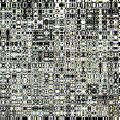
cuzco11b
cuzco8
floral01aSF
forest01
gnarlydudeaSF
green04expa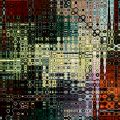
greon02aSF
greon05
ink02expa
ink04aSF
ink06aSF
ink07a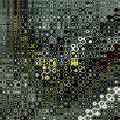
ink11aSF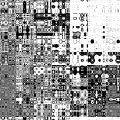
inky09abw
inky09
inky34
inky38
leaf01 07ostrowave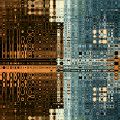
leaf01 13a
leaf01 14a
leaf01 18aSF
leaf01 19diffuwavea
leaf01 19diffuwave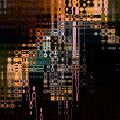
leaf01 20
lines02inkaSF
mystery01
mystery02
scallop03
ship01a
squiggle01dTC
test13
timbuktu01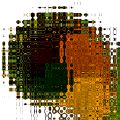
veg03a
all about antworks and how I made them
Antworks is the name I've given to the series of images made from a special combination of graphical effects. On their own, these two computer graphics filters produce mildly interesting effects, but together, applied in sequence, the result is something completely different and can be quite astonishing. Most incredible of all, it's very easy, once you know how to do it.
The two filters are India Ink, a photoshop filter made by Flaming Pear, and Block Wave, a filter made from an algorithm by Pieter Voloshyn and available as a plugin for showFoto, a Linux photo editor, part of the digiKam project. There may be other ways to achieve the same effect, although I haven't ever seen anything like Antworks before, the process involves two rather simple graphical effects that are available in a number of forms. It's the combination that leads to the Antworks effect, something I stumbled on, as is usually the case, by accident.
The process, as I use it, is a cross-platform combination of graphics tools. Although I've never used Photoshop, I believe it also has a similar Block Wave distortion filter, and along with India Ink, a photoshop compatible filter (.8bf), it's probably possible to reproduce the Antworks effect using Photoshop. I used the Windows emulator, Wine, to run XnView from which I was able to run India Ink. All the rest of the process was done in showFoto.
I added one extra, and minor step, reducing the number of colors in the image to 256 (indexing) in order to dramatically reduce file sizes by about 75% without any noticeable reduction in image quality (usually). The simple series of steps I use is this:
1. Take any image (around 400x400 px) and apply the India Ink filter to it using these settings: Style - bubbles; Scale - 4x; Line - thinner; and Color method thing - queen. Everything else adjustable can be left in it's default setting (unless you want to experiment). Save the image and open it up in showFoto.
2.Resize the image upwards to double the size (Transform/Resize).
3. Apply the Block Wave 1 filter (Filters/Distortion Effects.../Type: Block Waves 1) using the default settings (Level: 25; Iteration: 10). You may need to install the digikam image plugins unless your version of showFoto or digiKam came with it preinstalled.
That's it. There's one small thing you can add to that, if you want slighty more polished looking images. Replace the quick resizing function with the "Blowup" filter instead (Transform/Blowup...). It takes a lot longer, and doesn't change the appearance of the image except that it makes the lines and shapes more smooth and polished looking, just like antialiasing does. It's just a higher quality version of resizing but it also makes for a slightly blurred image, just like anti-aliasing, again. I'm sure Photoshop has something like this, but the "smart enlarge" filter in the Gimp (Linux's Photoshop "killer") isn't as good as showFoto's Blowup, so maybe you need showFoto for this too.
Other things to consider. There's probably something to be gained from trying out different India Ink settings, like using Basket Weave or Flow instead of just Bubbles, or changing the Line size, thickness and the coloring/layering method thing (I don't see a name there). I think you need a coloring method that produces a black line. I tried Soft Light, which gives a colored line, and the results were disappointing.
Some of the black and white methods might be interesting; color doesn't always make an image better. In my opinion, you need to start with an image that already has a good color scheme. I use the fractal program, Inkblot Kaos written by Stephen Ferguson, a veteran fractal programmer, because it produces very nice, almost watercolor-like, tinted images. You can get it (and everything else the author has made) for $25.
There's plenty of ways to make images, even fractal images, to "feed" into the Antworks machine, but I'm familiar with Inkblot Kaos, and it's got endless possiblilities, and it works reasonably well with Wine on Linux. The results are hard to predict, which makes the process quite exciting. What surprises me, however, is how often the process produces something appealing. It's not normally that way with "algorithmic" art, which often creates imagery with more technical than artistic appeal. What I think this says, though, is that the creative potential of computers is really only limited by the ability of users and programmers to exploit the inexhaustible efforts of these calculating powerhouses.
I'm just a hobbyist who likes to experiment with computer graphics and only uses tools made by others. Of course, many great discoveries have been made by sailors and other simple people whose only contribution or accomplishment was getting lost and ending up in a place where no one previously thought of going. That's what makes algorithmic art, in particular, and computer graphics, in general, so appealing --experimentation and discovery.
I find the Antworks images have a certain Victorian sci-fi/ Jules Verne look to them. They have this complicated plumbing and port-hole look to them along with a Where's Waldo or detailed mural appearance. What's most surprising about them is that if you look at them from a distance, or as a thumbnail, they appear to be nothing more than a mosaic or pixilated version of the raw image that was used. Their appeal is in the details.
One variation I've found to be sucessful is to change the default settings for the Block Wave filter (it doesn't matter much whether you use 1 or 2) to Level: 77 and Iteration: 7. Or, Level: 100 and Iteration: 5 or 6. This produces a much more detailed and kaleidoscopic image. Another thing you can do is use the Ostromoukhov style instead of Bubbles with the India Ink Photoshop filter; it makes for a smoother image despite the fact that it's function is to produce a pattern with dots instead of circles.